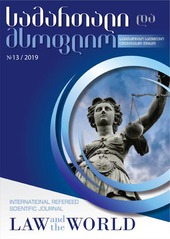REVISITING THE CALIFORNIA FELONY MURDER RULE 
##plugins.themes.bootstrap3.article.main##
Abstract
Recent legislation in the state of California has modified the use of the above theories to decrease the possibility of convicting someone who is not the direct perpetrator of murder. Particularly, California Senate Bill 1437 has limited the use of accomplice liability for felony murder. The bill intended to prohibit murder convictions where the participant was not the actual killer or a direct aider or abettor of the murderer. Thus, it was the intent of the California Legislature to correct what was perceived to be a need for statutory changes that would provide for more equitable sentencing of homicide offenders in accordance with their actual involvement in the crime. This was based on the bedrock principle of law and of equity that provides that a person should be punished for their actions according to their own level of individual culpability. Because the felony murder rule was being used to convict defendants of murder who had not killed nor possessed the intent to kill, it was necessary to amend the rule and the natural and probable consequences doctrine, as it relates to murder, to ensure that murder liability is not imposed on a person who is not the actual killer, did not act with the intent to kill, or was not a major participant in the underlying felony who acted with reckless indifference to human life.
##plugins.themes.bootstrap3.article.details##
Section
Articles
How to Cite
REVISITING THE CALIFORNIA FELONY MURDER RULE. (2019). Law and World, 5(13), 14-20. https://lawandworld.ge/index.php/law/article/view/174


